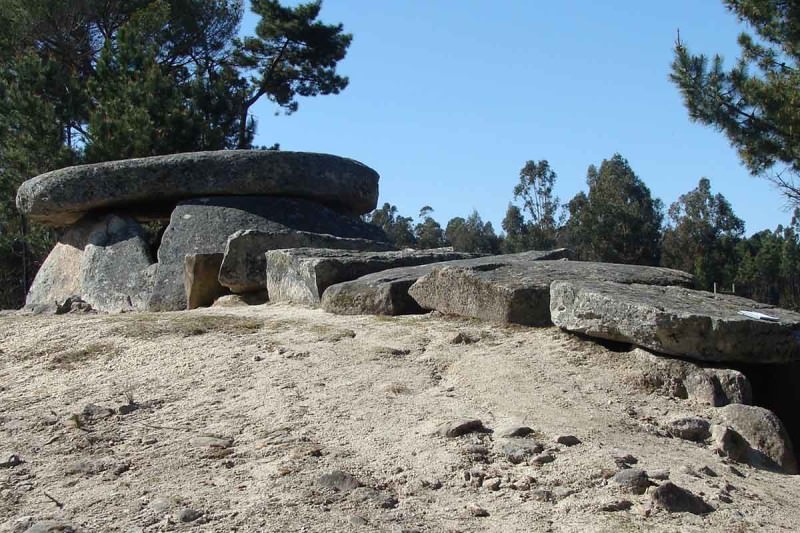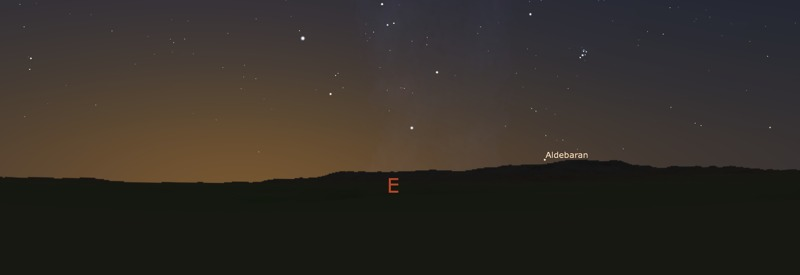 |
| 1/4. Dolmen da Orca, a typical structure in Western Iberia, part of the megalithic cluster of Carregal do Sal. |
Thousands of years before the invention of the telescope, prehistoric humans may have built underground observatories to espy faint stars. There may even be countless such structures hiding in plain sight in Europe, as they were also used as burial tombs.
The structures are known as “passage graves” – underground tombs that connect to the outside with a long, straight corridor. They are common throughout Western Europe, from Portugal to Scandinavia.
Now archaeoastronomers are making the case that they could also have been used for spotting stars at dawn, when they are normally too faint to see. The enhanced vision arises because someone looking out along the passage from the depths of the tomb would find its walls blocked out most of the ambient light. The viewer’s eyes would also be adapted to the dark.
 |
| 2/4. What we might have seen from Carregal do Sal megalithic structure, at dawn in late April, circa 4,000 B.C. All images: Fabio Silva. |
This would allow knowledgeable observers to spot stars at morning twilight as they come into view for the first time that year, having previously been below the horizon, says Fabio Silva at the University of Wales Trinity Saint David in the UK. Silva presented the theory at the National Astronomy Meeting in Nottingham this week. [...] New Scientist / Link 2
Actualización: Las tumbas de corredor megalíticas pudieron ser también observatorios astronómicos
Las tumbas de corredor son cámaras funerarias a las que se accede por un pasaje estrecho de piedras o megalitos dispuestos como entrada. Datan de la época neolítica y existen ejemplos en toda Europa, desde Portugal hasta Escandinavia, e incluso en el norte de África. En España son especialmente abundantes en Cantabria, Galicia y País Vasco. Ahora una nueva teoría apunta a que además de monumentos funerarios, pudieron servir también como observatorios astronómicos.
Según reporta New Scientist la teoría fue presentada recientemente por Fabio Silva en el National Astronomy Meeting de Nottingham. Silva cree que los corredores de las tumbas eran usados para observar las estrellas al amanecer, un momento en que éstas serían más dificiles de ver desde el exterior. Las paredes del corredor bloquearían la luz ambiental y, al mismo tiempo, adaptarían los ojos del observador a la oscuridad...







1 comentario:
Actualización: Las tumbas de corredor megalíticas pudieron ser también observatorios astronómicos
Publicar un comentario